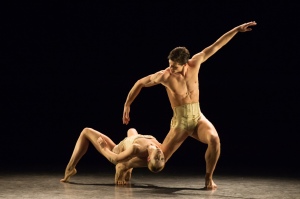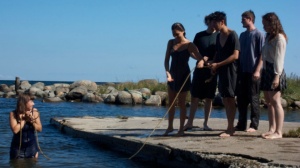Dance UK’s first national conference was held in London April 9-12. The theme was the Future of Dance and Molli and Claire were assigned to two events to write about them for the well-known dance website londondance.com
One of the assignments was to cover the panel discussion, chaired by Arlene Phillips CBE,on the future of musical theatre. Coincidentally, we had just been to see Evita, performed by the youth group of the Little Theatre Company,at Burton-on-Trent’s Brewhouse Theatre, that same week (see previous post).
The production was full of freshness, vigour and enthusiasm, backed up by a high level of professionalism and dedication from adult supporters – a winning combination.
The conference panel discussion was about the challenges facing musical theatre, and it became clear that one problem is how jaded the creative teams feel about putting on the much-loved classic musical revivals. The two choreographers in the panel – both leaders in their field – were frustrated that the financial backers didn’t want the winning formula to change. There was little or no scope for development, which was leading to a creative sclerosis. Musicals were no longer an art form, they said, they were merely part of the tourist industry mass money making machine.
To me, this was a red rag to a bull, especially as I had just seen such a good production. Despite Molli’s advice not to pitch in (we were there to report not take part) I raised my hand. Tourists, I pointed out, have hearts, and minds, They have brains, they even have artistic sensibilities and critical faculties. They go to musicals for a different experience to going to a play or seeing art. They go for the feel good factor, to be cheered up, emotionally engaged and uplifted. To come away with a song in their heart and a lightness of step.
The choreographers pointed out that musical theatre is regarded with snobbery by other art forms. That is unfortunately probably true. But why? There is a current trend in literature as well as the arts, of perceiving anything cheerful as less ‘intellectually worthy’ than something that mires you in sadness and leaves you feeling down.
And yet, isn’t raising morale and lifting spirits the most worthy outcome of all? Think of the role of songs in the war for marching troops. and the vital role of music hall in raising morale. Light heartedness has its serious side, because without morale we flounder. Today we are constantly exposed to negative news from all corners of the globe and musicals are one way of counteracting that.
The best and brightest of the classic musicals are needed now more than ever. They should be revered, not derided, and it is worrying to hear that people in the industry feel that they are inferior, at least in London’s West End. Let’s hope attitudes change. In the meantime here’s an immediate challenge – keeping a long running production as fresh for every night’s audience, as the youth production of Evita was last week. That should keep everyone involved on their toes.
For the report on the panel discussion
http://londondance.com/articles/features/future-of-dance-form-debates/musical-theatre-what-a-song-and-dance/






